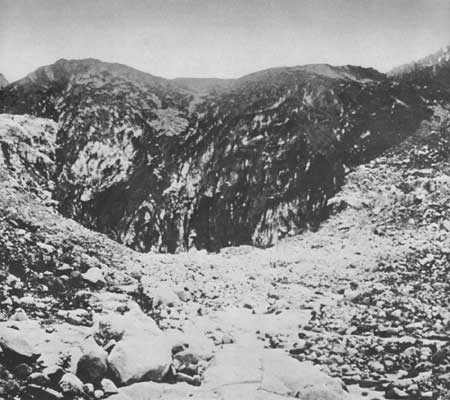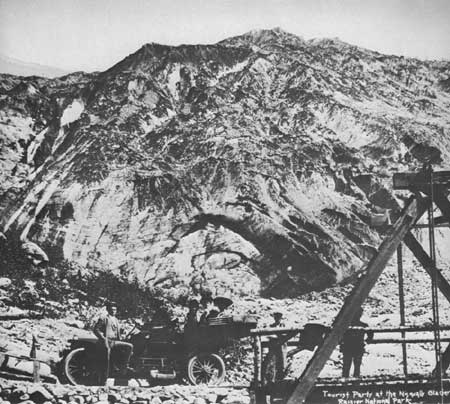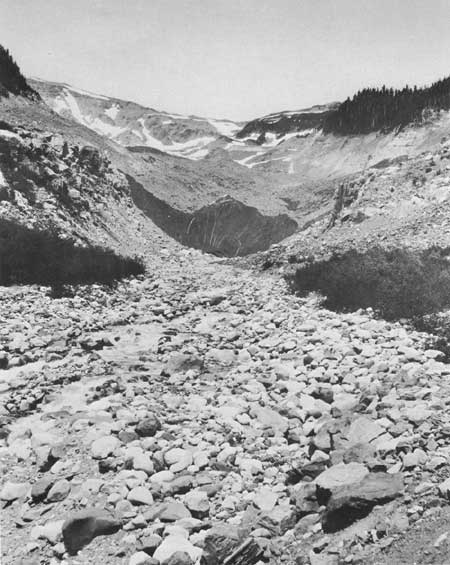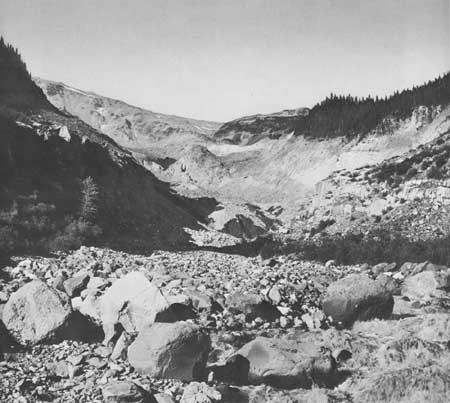
|
Geological Survey Professional Paper 631
Analysis of a 24-Year Photographic Record of Nisqually Glacier, Mount Rainier National Park, Washington |
QUALITATIVE INTERPRETATIONS
CHARACTERISTICS OF THE TERMINUS
The terminus of Nisqually Glacier has been illustrated by photographs since 1884. These complement the field surveys by showing in more detail the irregularities of the terminal margin and by indicating its approximate position during periods when no surveys were made. For example, figures 16 and 17 show that the glacier terminus near the falls at left was in a more advanced position in 1908 than in 1903.
The dynamic condition of a glacier's snout also is revealed by photographs (Meier and Post, 1962). By its characteristic bulging, crevassed, "fat" appearance an advancing terminus (fig. 16) usually can be distinguished from a retreating terminus (figs. 17-19). If a glacier is receding or stagnant, the front has fewer crevasses and is more gently sloping; it may be segmented as is shown in the 1962 picture in series 5 (fig. 24) where the advance of fresh ice is visible upglacier but has not yet affected the dead-ice terminus. Ice hummocks on the glacier (fig. 17) also indicate a wasting condition. The "sliced-off" appearance of the terminal front shown in figure 18 has been typical of Nisqually Glacier's stagnant terminus during its long recession. For further illustration of changes in the glacier's terminus, see figures 20-25.
The photographs in this report, when viewed in the light of contemporaneous field survey results, show that the appearance of a glacier's terminus is roughly indicative of its dynamic state; however, the terminus does not reflect any condition upstream from the terminal area. Further, annual pictures of the snout do not necessarily reveal the presence or absence of movement of the terminus. For example, while photographs might illustrate the occurrence of a net recession of 30 feet (9 m) in a 12-month period, this could have resulted from 10 feet (3 m) of forward movement accompanied by 40 feet (12 m) of melting, or 70 feet (21 m) of forward movement offset by 100 feet (30 m) of melting.
| <<< Previous | <<< Contents >>> | Next >>> |
pp/631/sec4.htm
Last Updated: 01-Mar-2006



